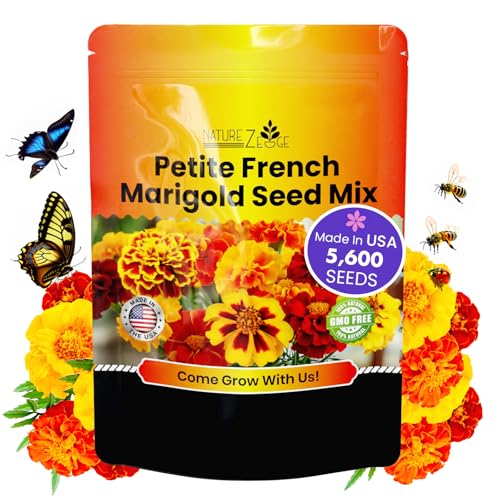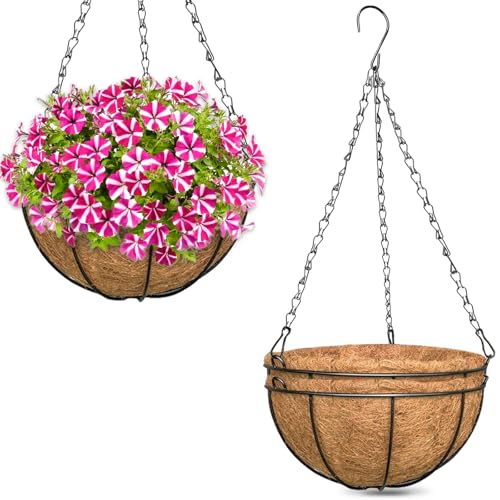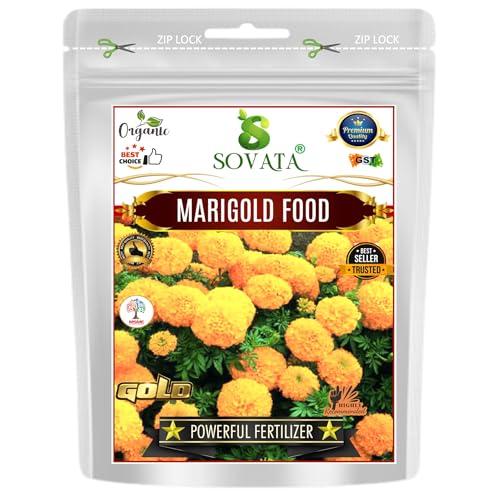This is the 1 plant you should be happy to see pests feast on – how to use it as a decoy to protect other flowers and shrubs from harm
These orange blooms act as trap plants, drawing pests away from more desirable planting
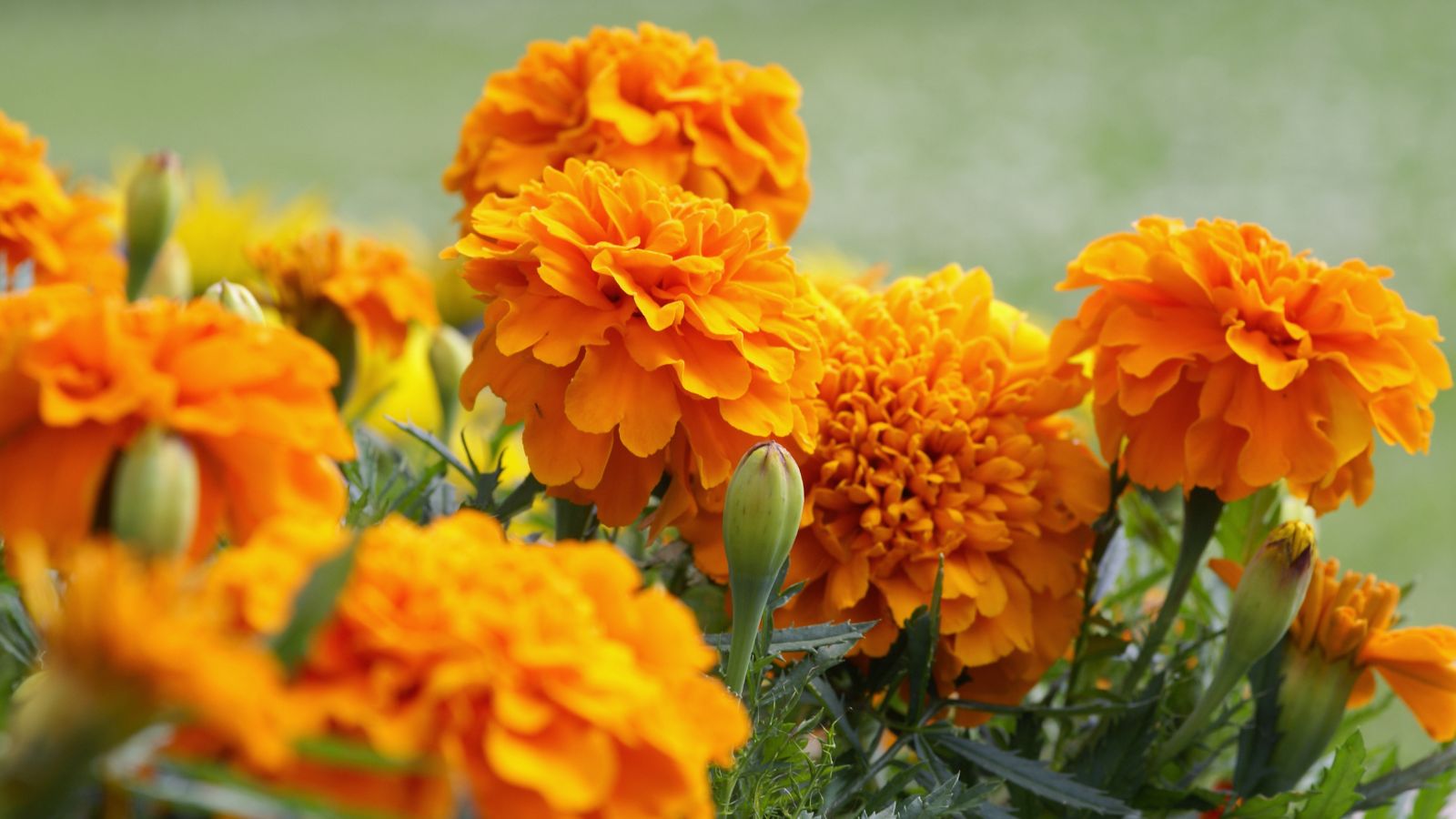

Marigolds are a common sight in many gardener's yards because they bring so many benefits. Not only do they wow with vibrant orange hues, they also have incredible pest-repellent qualities, including being one of the best trap plants. So, if you're wondering 'what eats marigolds?' because you've spotted holes in your blooms, you should be pleased to know this pest control plant is working.
It's easy to grow marigolds in a range of settings: pots, borders, on balconies, and even window boxes. This versatility adds to its effectiveness at protecting tender plants and crops from pest damage. Its strong scent deters some pests from particular areas and attracts others away from other plants, protecting them from damage. It's in this sense marigolds make the list of trap plants for pest control, acting as a decoy to gain the attention of certain pests.
These pests that are attracted to marigolds then feed on them, rather than more desirable planting. While this may leave your marigolds looking a little worse for wear, it does mean your other plants go unharmed. Here, we take a closer look at what eats marigolds and how to use this to your advantage.
Which pests eat marigolds?

If you're researching what eats marigolds to understand if it will be a suitable trap plant for your plot, the good news is there are a wide range of pests these orange blooms distract.
'Marigolds are renowned for repelling many pests, but a second benefit they offer is that they actually do attract some other pests,' says Homes & Gardens' Gardens Content Editor Drew Swainston.
'Using them as a trap plant lures these unwanted pests towards the marigolds, ensuring they stay away from your more desirable plants.
'In particular, slugs and snails are attracted to marigolds, and they can be a sacrificial plant rather than allowing the voracious munchers to eat their way through other crops,' Drew adds.
Design expertise in your inbox – from inspiring decorating ideas and beautiful celebrity homes to practical gardening advice and shopping round-ups.
From slug control and getting rid of snails, to sap-sucking pests like aphids and spider mites, and other insects, such as beetles and weevils, marigolds are attractive to a range of pests.
There are larger pests that destroy plants that marigolds can 'trap', too. This includes rabbits, deer, and even squirrels.
As for what attracts these pests to marigolds, it's a mixture of their bright yellow and orange colors and strong fragrance. French marigolds are thought to be particularly effective at attracting harmful insects like aphids because these flowers have a sticky sap they like to feed on.
You can grow French marigolds with these seeds from Walmart.

Drew qualified as a journalist and wrote for many websites and publications, before studying for a horticulture qualification. He worked as a professional gardener for several years, specializing in kitchen gardening. He's now bringing his expertise and passion to Homes & Gardens as a member of our team.
How to use marigolds as trap plants
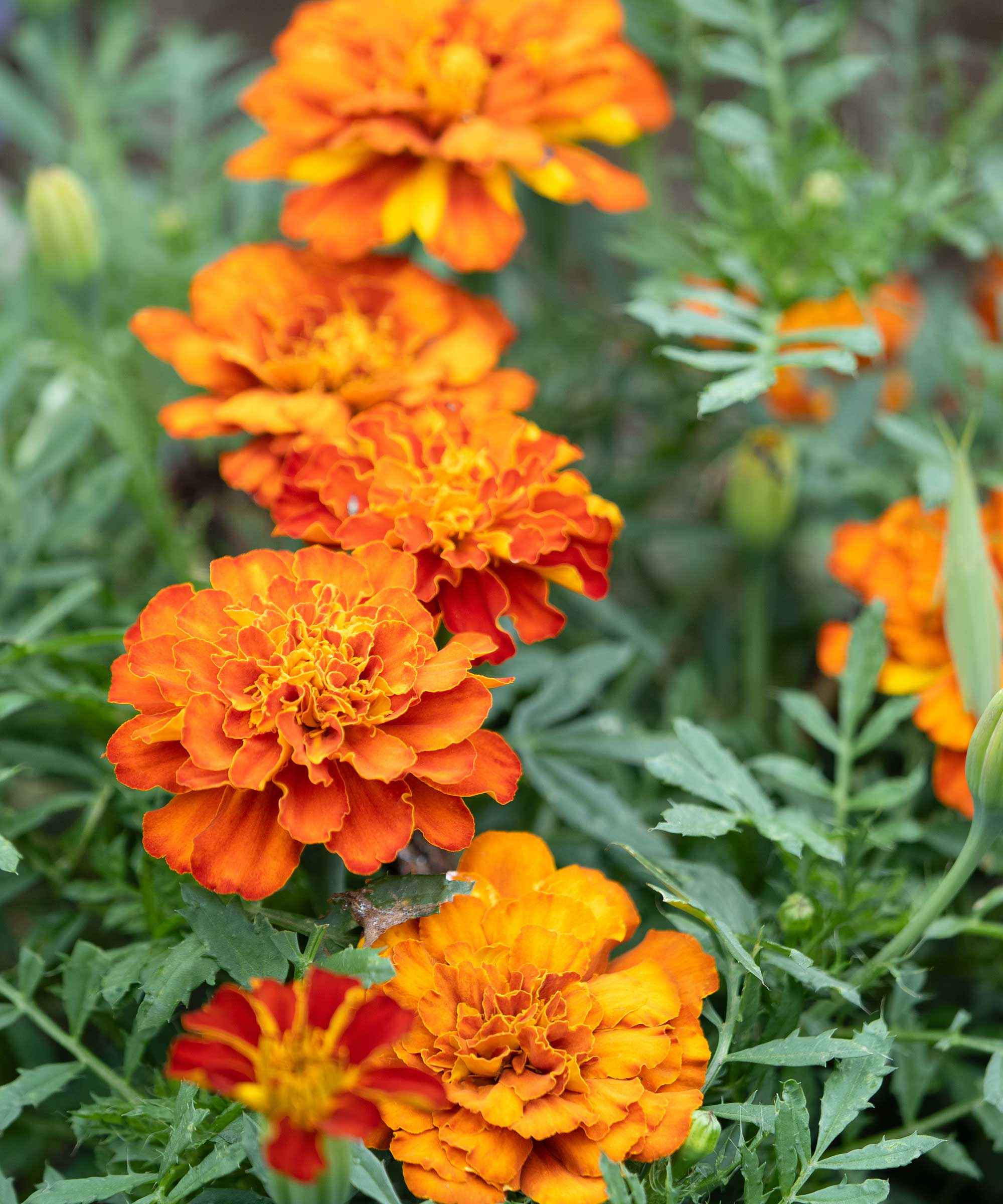
Now you know what eats marigolds, you might be quite keen to set them up as trap plants, whether you're planning to grow marigolds in pots or borders. To effectively use them as trap plants, it's all about getting the placement right:
'Plant the trap crop nearby your more desirable plants, but no closer than six feet away, as otherwise the pests you are trying to keep away can just easily jump over onto the plants you are trying to protect,' Drew explains.
For example, you may choose to plant marigolds in a vegetable garden away from salad crops to encourage slugs and snails to head in the other direction. Or, position them in between vegetables to stop pests hopping between crops.
Choosing to have marigolds as part of a container garden allows you the freedom to move these pest-repellent plants to different spots as you need to.
When doing so, opt for a pot with drainage holes to ensure the marigolds don't become waterlogged and suffer root rot. This beautiful terracotta pot from Amazon is a good choice.
Once your marigold has 'trapped' pests and is looking infested, you can dispose of it, physically removing pests from the susceptible area of your garden.
FAQs
Can all marigolds be used as trap plants?
While it's true the majority of marigold varieties can be used in pest control, there are some that are more effective as trap plants than others. To name a couple, French marigolds and signet marigolds (seeds from Walmart) tend to be favored for this purpose. The sap these blooms produce, plus their bright color and fragrance, attracts insects, slugs, and snails away from more desirable plants in your yard.
Not only do marigolds repel harmful pests and attract them away from other plants, their natural pest control uses go even further. They also bring many beneficial insects, such as ladybugs and hoverflies, which then prey on more harmful insects, once again protecting your desired plants.
No matter how you intend to use marigolds in your yard, it's important to know when to plant marigolds outdoors to ensure successful growth.
Shop marigold growing essentials

Tenielle is a Gardens Content Editor at Homes & Gardens. She holds a qualification in MA Magazine Journalism and has over six years of journalistic experience. Before coming to Homes & Gardens, Tenielle was in the editorial department at the Royal Horticultural Society and worked on The Garden magazine. As our in-house houseplant expert, Tenielle writes on a range of solutions to houseplant problems, as well as other 'how to' guides, inspiring garden projects, and the latest gardening news. When she isn't writing, Tenielle can be found propagating her ever-growing collection of indoor plants, helping others overcome common houseplant pests and diseases, volunteering at a local gardening club, and attending gardening workshops, like a composting masterclass.
You must confirm your public display name before commenting
Please logout and then login again, you will then be prompted to enter your display name.
